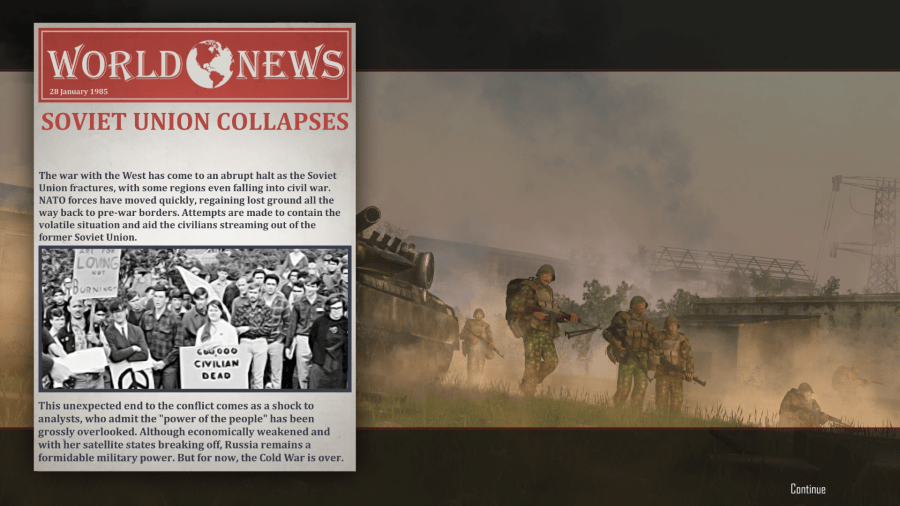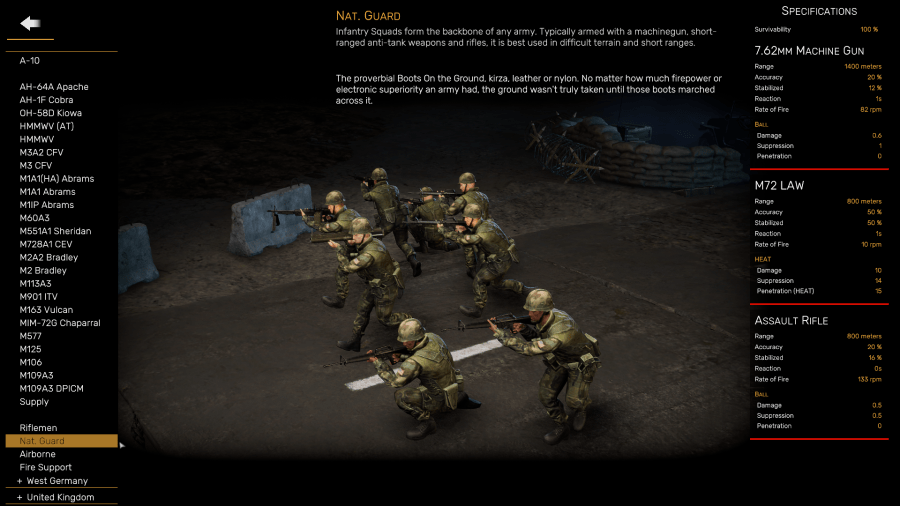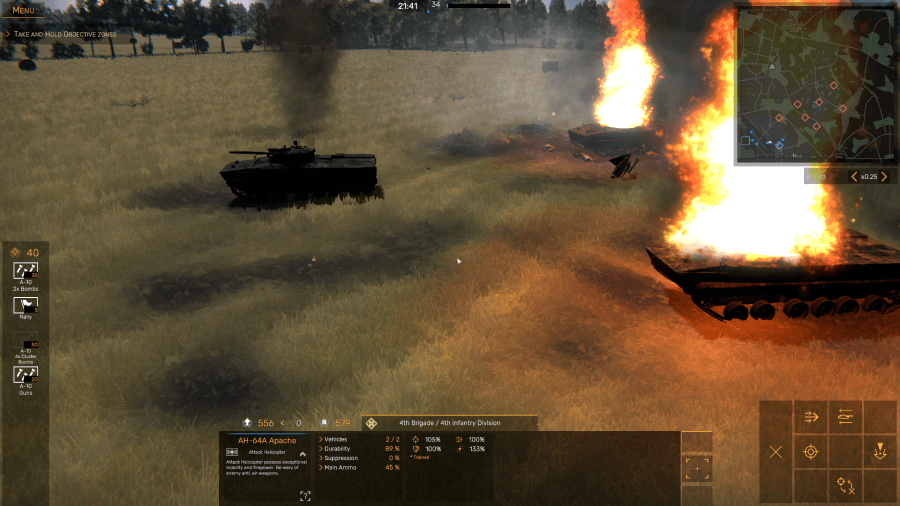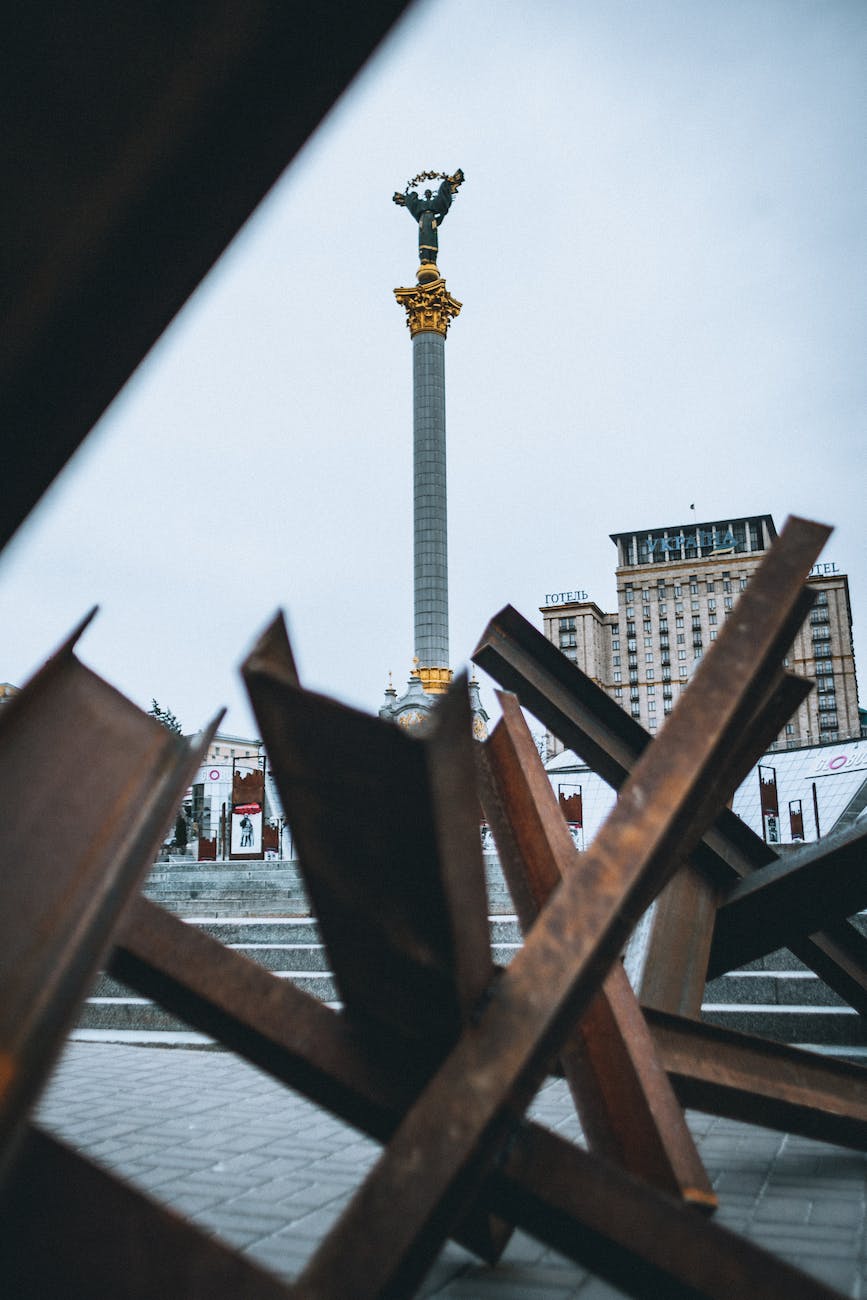
Dies Irae: The Story Continues….

In early 1982, Sidgwick & Jackson of London and Macmillan Publishing of New York published The Third World War: The Untold Story, a war novel co-written by General Sir John Hackett and seven collaborators, many of whom had co-written The Third World War: August 1985, published four years earlier and, at the time, a best-selling book in Great Britain and the United States.

The Third World War: The Untold Story, like the earlier book, is presented as a nonfiction account of the Third World War, a brief but violent global conflict between a Soviet Union beset by economic failure and unrest in the peripheral countries under its control and a slowly resurgent North Atlantic Treaty Organization that has, belatedly, awakened to the threat of Soviet Russian adventurism and modernized its defensive capabilities in Western Europe after decades of drawdowns and slashed defense budgets by many of NATO’s member nations.
A Book from Another Era

Written during President Ronald Reagan’s first term in office (1981-1985) and at a time when many Western militaries worried that the Union of Soviet Socialist Republics (USSR) was becoming more bellicose in the last years of General Secretary Leonid Brezhnev’s tenure in the Kremlin as leader of the Communist Party and head of the Soviet government, The Third World War: The Untold Story was both a work of near-future speculative fiction and a call to arms for its Western readers, particularly conservatives who, like Reagan, thought America, Britain, and their NATO allies needed to deter a Third World War by improving the Atlantic alliance’s conventional military capabilities.

As the dust jacket blurb declares:
The full potentialities of World War III become more terrifyingly clear every day. It could begin anywhere, and by its seemingly conventional and innocuous start, could take us quite by surprise. But it need not, because The Third World War: The Untold Story lays out a detailed, comprehensive thesis of how, where, and why a worldwide confrontation could be waged. The Third World War: The Untold Story is fiction, but the premises on which it is based are factual.
The Pen is Mightier Than the Sword…

As was the case with 1978’s The Third World War: August 1985, this work – which in the 2020s would be categorized as either “retrofuturism” or “alternate history,” though Hackett is the top-billed author, the general – who was one of the brigade commanders at Arnhem during Operation Market-Garden in World War II and stayed in the postwar British Army until the late 1960s, when he simultaneously commanded Great Britain’s ground force in West Germany (the British Army on the Rhine) and NATO’s Northern Army Group (NORTHAG) – provided the overall scenario and helped edit the various chapters, but most of the writing was done by his co-authors.

These were:
- Air Chief Marshal Sir John Barraclough, a retired Royal Air Force pilot and, at the time the book was written. President of the Royal United Services Institute for Defence Studies in London
- Sir Bernard Burrows, a retired diplomat and, from 1960 to 1970, British Permanent Representative on the NATO Council
- Brigadier Kenneth Hunt, a retired British Army officer and a former Standing Group Representative to the NATO Council (1964-1967). At the time the book was published, Hunt was a Visiting Professor of International Relations at the University of Surrey
- Vice-Admiral Sir Ian McGeogh, who, like Hackett, was a World War II veteran. His NATO career included several important submarine-related postings, as well as NATO Commander, North Atlantic between 1968 and 1970
- Norman Macrae, the sole journalist in the group, and in 1982, the deputy editor of The Economist since 1965
- Major-General John Strawson, a former Chief of Staff, United Kingdom Land Forces (1972-1975)
- “Viktor Suvorov,” the pseudonym of Vladimir Bogdanovich Rezun, a former Soviet Army and GRU intelligence officer who defected to the West in 1978 and became a successful writer of nonfiction books about the Soviet army and intelligence services

Other contributors include Vladimir Bukovsky, a Russian writer and dissident, and Hugh Foot, a respected British diplomat who is referred to by his life peerage title, Lord Caradon.
The Third World War: The Untold Story

Written four years after The Third World War: August 1985, the second book in the duology is, like the first, presented to us as a non-fiction book published – presumably – by Sidgwick & Jackson in late 1987, six months or so after the first book. According to the foreword, the same group of concerned Britons reunited to produce The Third World War: The Untold Story in a bid to expand the narrative of the original account of how, when, and why war broke out in August of 1985 and to add “newly revealed” perspectives from the Soviet participants in a war that had occurred only two years before.
In the broad strokes of the scenario that Hackett created for the Third World War duology, the book’s authors stick to the formula – and basic premise – of The Third World War: August 1985. The major trigger for the conflict – a series of crises in various parts of the world that began in 1984 around the same time that a Republican governor (the fictitious “Governor Thompson” of South Carolina) defeats the very real Democratic former Vice President Walter Mondale in the U.S. Presidential election reaches a climax when Soviet and American forces clash in Yugoslavia in July of 1985.
The Third World War: The Untold Story does not diverge – at least in the Big Picture of the world of 1984 presented by the authors in The Third World War: August 1985 – from the original novel. It does, of course, make some cosmetic changes made necessary by reality, such as rebooting the part about who was President of the U.S. in 1984 and not mentioning that the runup to war began at the end of Jimmy Carter’s second term, which was mentioned in the first book but conveniently – and pointedly – excised from the second.
Because Hackett could not change the basic scenario he and his collaborators had created in the first book, The Third World War: The Untold Story does not mess with the war in Germany much; the Warsaw Pact’s planned stop line – the French border – is the same, and the Pact’s eventual conquests (large parts of West Germany, all of Denmark, and huge chunks of the Netherlands find themselves under Soviet or Pact occupation before the fortunes of war go NATO’s way) are identical to those in the 1978 “faux history.”
Nevertheless, the authors – citing the recent finds of new revelations found in captured documents and interviews with Soviet participants that range from combat veterans to former senior Party officials in the Kremlin – have added new material that “sheds light” on topics that were overlooked in The Third World War: August 1985 due to the incompleteness of information available to them at “Eastertide, 1987.”

Again, let’s look at the book’s dust jacket to see what Hackett and his collaborators did to expand The Third World War: August 1985’s story without contradicting it:
Incorporating a wealth of new intelligence data, new analyses of the true gravity and urgency of the current world situation, newly declassified information, and stunning new perspectives on where we are headed, this superbly authoritative work is a completely reconstructed view of the conflict. General Sir John Hackett, aided by the insights of a Soviet defector, takes us within the Politburo and the ranks of the Russian army, exposing issues and probable trends that we can no longer afford to ignore:
- Inside the Politburo as War and Peace Are Debated
- The War Through the Eyes of a Red Army Soldier
- China Invades Vietnam
- The Far East is Convulsed
- Central America: The U.S. Falls into the “Elephant Trap”
- Norway and Sweden Fight to Repel the Russian Invasion
- Air Battles and Superfighters
- War in Space: Battle of the Satellites
- Libya Smashed
- Polish Troops Change Sides
- Moscow Food Riots
- How the Best Tanks Won
- The Latest Assessment of Nuclear Weapons
- Ireland’s Key Role
- The Amazing Voyage of the Kiev
- Collapse of the Soviet Union

My Take

As I mentioned in my recent review of The Third World War: August 1985, I was still a “Cold War kid” when the Third World War duology was published. The first book came out in 1978, when I was still an older-than-average student at Riviera Junior High and Mom, my older half-sister Vicky, and I were attempting to share a brand-new townhouse in the Miami-area neighborhood called Fontainebleau Park. I didn’t read it right away, but I eventually checked out the hardcover edition from the library two years later, and, shortly after that, I bought the paperback edition, which was billed as The Illustrated Edition because the publishers had added an insert of black-and-white photos purportedly taken between 4 and 22 August 1985.
The Third World War: The Untold Story was published either late in my junior year at South Miami High School (spring/summer 1982) or at the start of my senior year (fall of 1982). Either way, it came out one year or so into Reagan’s first term as the 40th President and not long before Leonid Brezhnev died that November.
As I recall – keep in mind that human memory, including mine, is fallible – I did not skim through The Third World War: The Untold Story like I had done with the earlier book. I suppose I could claim that I was a bit older and more patient about what I probably found “boring” at 17, but I think my motivation was curiosity about how the writers managed to fit Reagan’s election victory in 1980 into a scenario in which his predecessor, Jimmy Carter, had been portrayed as a two-term President, as well as recent tumultuous changes in the Middle East (namely, Qaddafi’s aggressiveness as Libya’s dictator and Anwar Sadat’s assassination by Islamic radicals in 1981) and Latin America.
Well, as I mentioned earlier, Hackett and his colleagues tweaked the story by not mentioning Carter’s fictitious second term at all. They kept “Governor Thompson” to maintain consistency in the narrative. In a similar vein, every single world leader mentioned in The Third World War: The Untold Story, including the leaders in the USSR, Cuba, Libya, Ethiopia, and Egypt, is fictional, although I recognize the personality traits of their real-life counterparts in the novel.
At the time – when many people, including me, worried to some degree or other about the possibility of nuclear war in what was then the near future – I found solace in The Third World War duology’s predictions that if a war broke out in Central Europe between the West and the Soviet-led Warsaw Pact, the West would prevail. I was young, of course, and back then I didn’t stop to think about whether the book’s scenario of a quick war ending without a total nuclear exchange was, well, overly optimistic, biased, and therefore unrealistic.
World War III-themed fiction – then and now – tends to have two extremes: on the pessimistic side of the scale, a conventional war between the NATO alliance and the Soviet-led Warsaw Pact always ends with a global thermonuclear war which destroys civilization as we know it (examples, Dr. Strangelove, The Bedford Incident, Alas Babylon, and On the Beach, not to mention the 1983 TV movie, The Day After).

On the other side, though, there is the “NATO prevails” scenarios in which the West wins without anyone popping a nuke (Tom Clancy’s Red Storm Rising, published four years after The Third World War: The Untold Story is perhaps the best example of a rosy, no-nukes conventional World War III) or, if there are nukes used, it’s limited to a one-for-one exchange or, in the case of Harold Coyle’s Sword Point, the Bomb is used by a third party to provoke the two superpowers to destroy each other.
In this context, then, are The Third World War duology in general and this book specifically, realistic?
That, Dear Reader, I do not know. I am not a former military man, and even though I took (and passed with good grades) several courses related to the book’s theme (namely, International Relations and two units of Russian History) in college, I am not by any means an expert on strategy, weapons systems, diplomacy, Russian foreign and military policy (then and now), or geopolitics. I can make educated deductions based on what I studied at Miami-Dade in the late 1980s and what I read or watch now, but I can’t claim expertise about any of the concepts that Hackett and his co-authors explore in the two Third World War books.
As a writer and reader, I imagine that if Hackett’s team had written the duology to truly terrify the readers of the late Cold War, they might have considered a darker scenario in which NATO loses the war and the Soviet Union achieves its war aims as stated in the novel. (In fact, in the Sidgwick & Jackson UK-only hardcover, the authors penned an alternative ending in which this is the outcome of their World War III. Perhaps with an eye for the American market and fearful of losing U.S. readers, Macmillan left out this alternative ending in the hardcover edition; the 1983 paperback does include it, perhaps because Macmillan saw how successful Berkeley Books’ Illustrated Edition of The Third World War: August 1985 had been in 1980.)
I suppose that if the original scenario was dark and full of woe and doom, it might not have done well with potential readers, so it makes sense that Hackett and Co. decided on a more hopeful ending, even though some critics would ding them for being too biased toward NATO and dismissing the notion that the Russians could win and win decisively.
On the flip side, since it was the good general’s intention – stated clearly in the forewords of both books as well as on the dustjacket blurbs – to call attention to the need for the West to have a modern, large, well-equipped, and – most importantly – coordinated conventional force in Central Europe, I believe he opted for the sunnier, “the Russians will lose” scenario not just to sell more books, but also to encourage the average British or American reader to support higher defense budgets at a time when most people were still sour about the Vietnam War and not keen about supporting their military.
Obviously, since respect for the military and the need for preparedness is a cornerstone of conservative ideology even now, it’s obvious that the authors are conservatives themselves. They do not vilify liberals in quite the same way that Brexit/Eurosceptic British right-wingers and American Trump supporters do now, but the authors do bemoan the reluctance of many Western leftists to admit that (a) Russia was then a threat to world peace thanks to its adherence to Marxism-Leninism and (b) their insistence that lower defense budgets in Western democracies were more conducive for waging peace than having a well-equipped, well-manned conventional military force that was not 100% dependent on the U.S. nuclear arsenal to deter Soviet aggression.
Of course, reading The Third World War: The Untold Story in the 2020s is akin to reading science fiction novels that claimed that we would have colonies on the Moon and even in the Asteroid Belt or on some of the other planets’ multitude of moons by now. As fact-based as the novel might be, some of its notions – such as perennial archrivals China and Japan creating an economic union or that the South African Border Wars would lead to the breakup of the Union of South Africa – come across as overly fanciful, especially since we know it never happened.
The only major prediction in The Third World War duology that came to pass is that the Soviet Union collapsed. Naturally, not as the result of a major global clash of arms but due to the Soviet system’s total failure as a socio-economic model. The real thing occurred a bit later – sic years, to be precise – than it does in the novel, and without a Third World War to cause it, but it did occur, and within Hackett’s lifetime (the general died in 1997 at the age of 86, a few months shy of his 87th birthday).
Fans of the alternative history genre might enjoy this book, perhaps even a bit more than the original 1978 book. The Third World War: The Untold Story focuses far more on the Russian perspective of the war, and it does have one character, a young Red Army officer named Andrei Nekrassov, who has a complete story arc that is presented in several vignettes scattered throughout the novel.
The book is still told in the “this is an actual history book” style, so readers who are expecting a more traditional novel will likely be disoriented, especially if they come across this book at a used bookstore or buy it on eBay or an Amazon third-party store without reading the first “faux history” book in The Third World War duology.

(Readers who are seeking that kind of story can read reissued editions – published by Casemate Press – of ex-Armor branch officer and novelist Harold W. Coyle’s Team Yankee, a 1987 novel that is set squarely in Hackett’s scenario, although Coyle creates fictional locations and NATO units rather than use the real-life counterparts, except when Team Yankee must mention well-known cities such as divided Berlin or major geographic features like the Saale River in Germany. Some of the typos in the Casemate reissues are embarrassing – that company sorely messed up with the copy editing in the 2016 hardcover, which annoys me greatly – but the novel is well-written and rings true because it was written by a Virginia Military Institute alum with many years as an officer in the U.S. Army.)

And even though Hackett and his team got a lot of things wrong – the Cold War did not go hot in the mid-1980s, after all – it did predict several things about Russia and how it conducts war that can be observed in the current war in Ukraine.

First, in both novels of The Third World War duology, the authors note that the Soviet Union/Russia use the specter of the Nazi era to justify starting a war in Europe and shattering the shaky peace that most of Europe had enjoyed since 1945. To keep the support from Marxist countries such as Cuba and African countries such as Angola, the Russians claim that West German is ruled by “neo-Nazi revanchists” who seek to reunite East and West Germany and destroy the Workers’ Paradise – the Soviet Union.

In 2022, the real-life Putin regime that runs the Russian Federation claims that Ukraine never existed as a nation-state until 1991 and that neo-Nazis, aided by the U.S. and NATO, are building bio-labs to create weapons of mass destruction designed to kill only Russians in order to destroy the Russian people and its aspirations to be a great power again.
Another prediction came to pass: In the face of a well-trained, well-equipped defense, Russia’s large army will probably not do as well as the Kremlin’s leaders want it to. In 1982, this is because Soviet doctrine and practice made the military overly dependent on a detailed plan of action and total subservience to a central authority.
In 2022, we see that Russia’s vaunted post-Soviet armed forces are good when they are suppressing the many restive ethnic groups within the nation’s borders, but even then, in the two wars that Russia fought in Chechnya at the turn of the 21st Century, the army did not do all that well and won by resorting to harsh punitive tactics endorsed by ex-KGB agent Putin himself.
In Ukraine, where Russia is fighting a fiercely independent nation that does not want to be ruled again by Moscow, we see that Ukraine, the underdog in the current war, can beat a demoralized and heavily propagandized army that is not well-led, well-equipped, or even well-fed.

This does not mean that Ukraine and the West can win a quick victory – there’s no feeling that the war will end by Christmas 2022, say – or that Russia will be so badly defeated that it will return to Kyiv all of the territories Moscow has stolen since 2014, but it does confirm The Third World War’s thesis that a poorly-led but larger force can be defeated by a smaller but more motivated one, especially if the latter is fighting on its home ground and for its nation’s existence.
As such, I do recommend The Third World War: The Untold Story, even though its 1982 “near future” perspective is, 40 years after its publication, “retrofuturism.”

You must be logged in to post a comment.